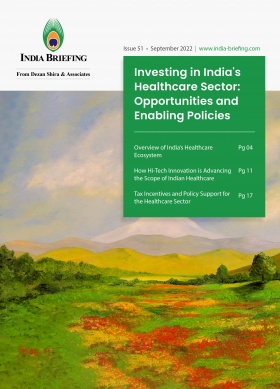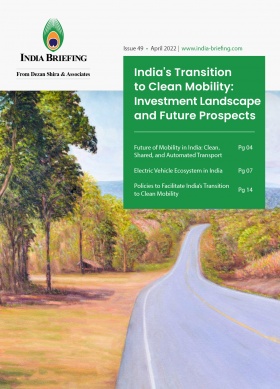Policies to Facilitate India’s Transition to Clean Mobility
India’s policymakers are keen to transform the country’s highly polluting transport industry with electric mobility and clean energy alternatives. The government at the central and state levels have provided enabling frameworks for the swift and seamless adoption of clean energy solutions. Additionally, all industries are embracing technological developments in information technology, big data, digital payments, etc. to create innovative solutions to facilitate the production and use of electric vehicles.
Federal initiatives to incentivize electric mobility in India
Several fiscal and non-fiscal measures have been put in place to facilitate the adoption of electric mobility. They are stated below.
National Electric Mobility Mission Plan 2020 (NEMMP)
It was launched in 2013 by the Department of Heavy Industry (DHI) as a roadmap for faster manufacture and adoption of EVs in India.
FAME Phase I
As part of the NEMMP 2020, the Faster Adoption and Manufacturing of Hybrid and Electric Vehicles in India (FAME India) Scheme was notified in April 2015 to promote the manufacture of electric and hybrid vehicle technology. It has mainly focused on four aspects – demand creation, technology platform, pilot projects, and charging infrastructure. For demand creation, incentives have mainly been disbursed in the form of reduced purchase prices.
FAME Phase II
Initially launched in 2019 for a period of three years, this scheme was further extended by 24 months till March 31, 2024. The scheme has an outlay of INR 85.96 billion (US$1.13 billion) to be used for upfront incentives on the purchase of EVs as well as supporting the development of charging infrastructure. This second phase focuses on supporting electrification of public and shared transportation and aims to support, through subsidies, about 7,000 e-buses, 5,00,000 e-three wheelers, 55,000 e-four wheeler passenger cars and one million e-two wheelers. In addition, creation of charging infrastructure is also supported.
On June 11, 2021, the Ministry of Heavy Industry announced amendments to the FAME II scheme to give a boost to EV demand among consumers.
Under the revised policy, the subsidy per electric two-wheeler (Indian-made), which is linked to the battery size, has been increased to INR 15,000 (US$204.60) per Kilowatt-hour (KWh) from INR 10,000 (US$136.40) KWh. Furthermore, electric two-wheeler manufacturers can now give discounts of up to 40 percent to consumers – a significant rise from the previous cap of 20 percent. The eligibility criteria to qualify for FAME II subsidy include a minimum range of 80 km on single charge and a minimum top speed of 40 km per hour.
These incentives should lower the purchase price and lift buyer sentiment. Industry stakeholders expect the policy amendments to enable the EV two-wheeler industry to clock sales of over six million units by 2025. Yet, manufacturers must work on meeting the policy’s eligibility criteria as a CRISIL report states that 95 percent of e-scooters sold in India do not, and are thus not eligible for the FAME II incentive scheme.
Production Linked Incentive (PLI) Scheme for Automobile and Auto Component Industry in India
Announced with a budgetary outlay of INR 259.38 billion (US$3.50 billion), the primary goal of this scheme is to boost clean energy production capabilities, such as through the electric vehicle industry in India, and expanding the country’s share in the global automotive trade. The credit ratings agency ICRA expects the PLI to accelerate investments towards developing a local EV ecosystem and potentially make India an export hub in the global auto supply chain. 20 companies have been approved as PLI beneficiaries under the “Champion OEM Incentive Scheme”, including Ford, Hyundai, Kia, Ashok Leyland, Piaggio, Hero MotoCorp, Suzuki Motor, Tata Motors, and Bajaj. 75 companies have secured PLI approval under the “Component Champion Incentive Scheme”, including Maruti Suzuki, Hero MotoCorp, Tata Autocomp, Mitsubishi Electric, Toyota Kirloskar, Motherson Sumi, Bosch, and Lucas-TVS.
The approved applicants proposed investments worth INR 450.16 billion (US$5.88 billion) under the Champion OEM Incentive Scheme and INR 298.34 billion (US$3.90 billion) under the Component Champion Incentive Scheme.
National Programme on Advanced Chemistry Cell (ACC) Battery Storage
The PLI scheme for ACC battery manufacturing has an outlay of INR 181 billion (US$2.49 billion). The goal is to establish local manufacturing capacity of 50 Giga Watt Hour (GWh) of ACC and five GWh of Niche ACC capacity. The program is designed to be technology agnostic. Beneficiary firms can choose suitable advanced technology and their corresponding plant and machinery, raw material, and other intermediate goods to set up their cell manufacturing facility to cater to any application.
The NPACC PLI scheme will thus aid local capacity building in core competent technologies to make India a hub of clean energy and boost local employment.
PLI beneficiaries announced under this scheme are Reliance New Energy Solar Limited, Ola Electric Mobility Private Limited, Hyundai Global Motors Company Limited, and Rajesh Exports Limited. Five other applicants have been placed on a waitlist, including Exide Industries Limited and Larsen & Toubro Limited.
Ministry of Power
It has clarified that charging EVs is considered a service, which means that operating EV charging stations will not require a license. Further, the revised consolidated Guidelines & Standards for Charging Infrastructure for Electric Vehicles was promulgated on January 14, 2022.
The guidelines cover land use and access, power tariffs, state and central government roles, timelines for providing connectivity for installation of PCS, among others.
Ministry of Housing and Urban Affairs
It is amending building by-laws and has notified that residential and commercial complexes must allot 20 percent parking space for EV charging facilities.
Ministry of Road Transport and Highways
Commercial and private battery-operated vehicles will now be issued green license plates. All battery operated, ethanol-powered, and methanol-powered transport vehicles will be exempted from the commercial permit requirement.
Ministry of Finance
Customs duty has been rationalized for all categories of vehicles, battery packs, and cells to support localization efforts. GST rates for EV purchases have been reduced from 12 to five percent and an income tax rebate of INR 1,50,000 is available on their purchase.
Department of Science and Technology
It has launched a grand challenge for developing the Indian Standards for Electric Vehicle Charging Infrastructure. It has also formed a Technology Platform for Electric Mobility in India.
Niti Aayog
The inter-ministerial steering committee of the National Mission on Transformative Mobility and Battery Storage is chaired by the CEO of Niti Aayog, the top public policy think tank of the government. The Mission aims to create a Phased Manufacturing Program (PMP) for five years till 2024 to support large-scale, export-competitive integrated batteries and cell-manufacturing giga plants in India and localize production across the entire EV value chain.
States/union territories policy
Over 27 states and UTs have formulated strategy plans for transforming mobility to provide their citizens with safe, inclusive, economic, and clean transport options.
While some states like Karnataka and Tamil Nadu have had a head start due to pre-planned public policies, targeted investor incentives, as well as support infrastructure, other states too have drafted policies to stimulate market demand and create infrastructure.
Regulatory landscape for electric vehicles in India
Clean energy pivot
Biofuel Policy Framework in India
Green hydrogen policy
To leapfrog its commitment to achieve net zero carbon emissions, the central government has announced the Green Hydrogen Policy, 2022. In the policy, the production target was raised five times from one million tons (MT), as announced in October 2021, to five MT by 2030. The Green Hydrogen Policy provides that manufacturers of green hydrogen be allowed to purchase renewable power from the power exchange or set up renewable energy capacity themselves or through any other developer, anywhere.
Additionally, through this policy, the government will assist in setting up manufacturing zones for production, connectivity to the Inter-State Transmission System (ISTS) on priority basis, and free transmission for 25 years – if the production facility is commissioned before June 2025.
This implies that a green hydrogen producer will be able to set up a solar power plant in one state to supply renewable energy to a green hydrogen plant in another state, and would not be required to pay any inter-state transmission charges.
About Us
India Briefing is produced by Dezan Shira & Associates. The firm assists foreign investors throughout Asia from offices across the world, including in Delhi and Mumbai. Readers may write to india@dezshira.com for more support on doing business in in India.
We also maintain offices or have alliance partners assisting foreign investors in Indonesia, Singapore, Vietnam, Philippines, Malaysia, Thailand, Italy, Germany, and the United States, in addition to practices in Bangladesh and Russia.
- Previous Article India’s Northeast Region: Scope for Investment in Fast-Developing States
- Next Article M&A as a Corporate Strategy to Leverage Technology, Embrace Digital Disruption in India














